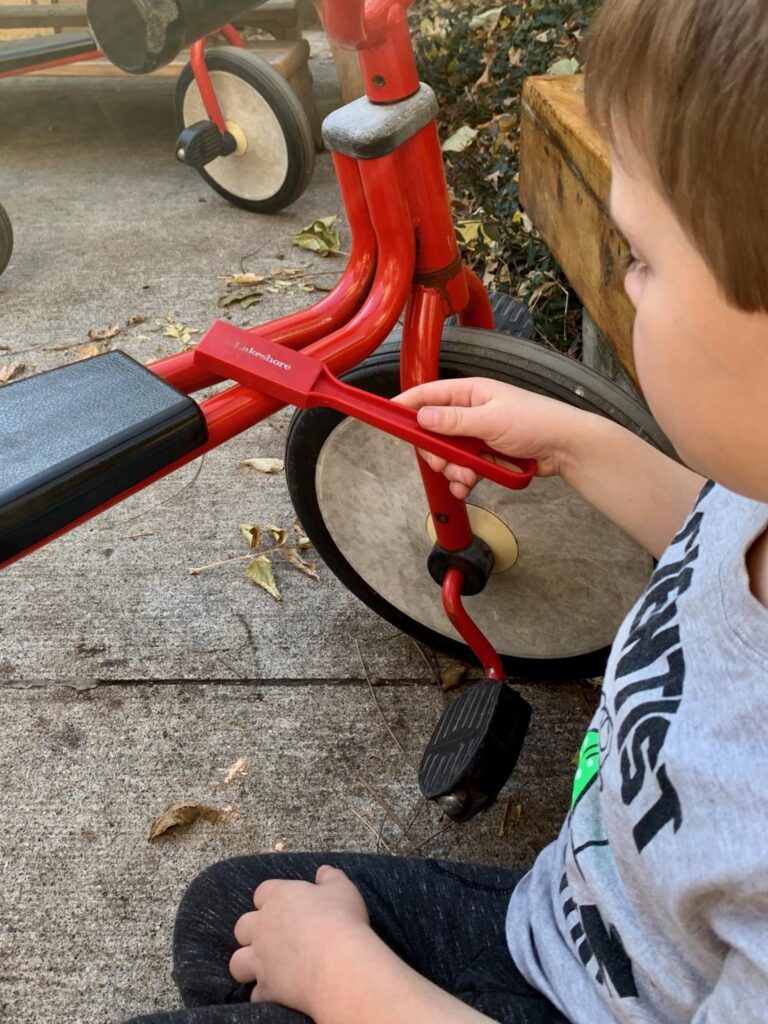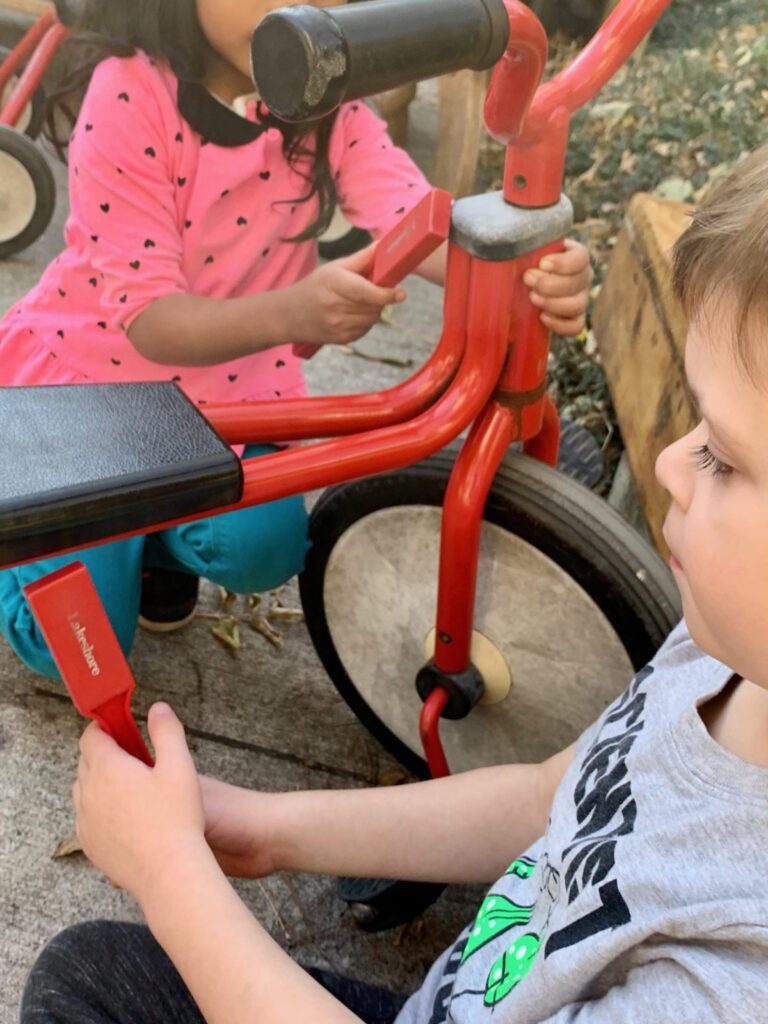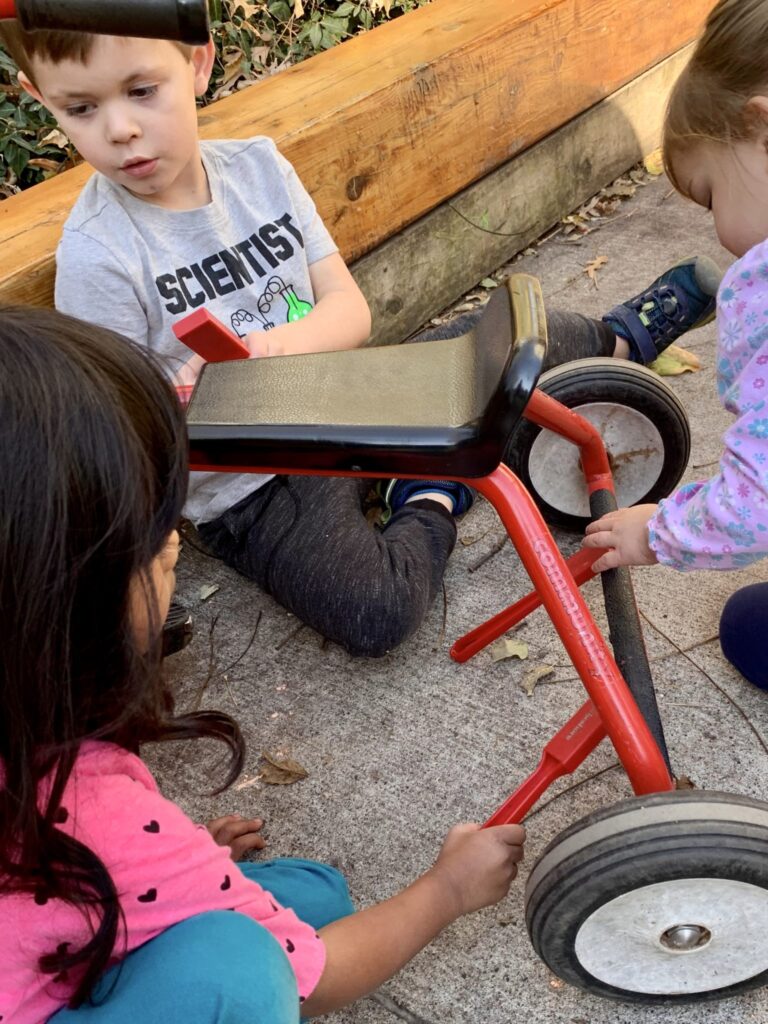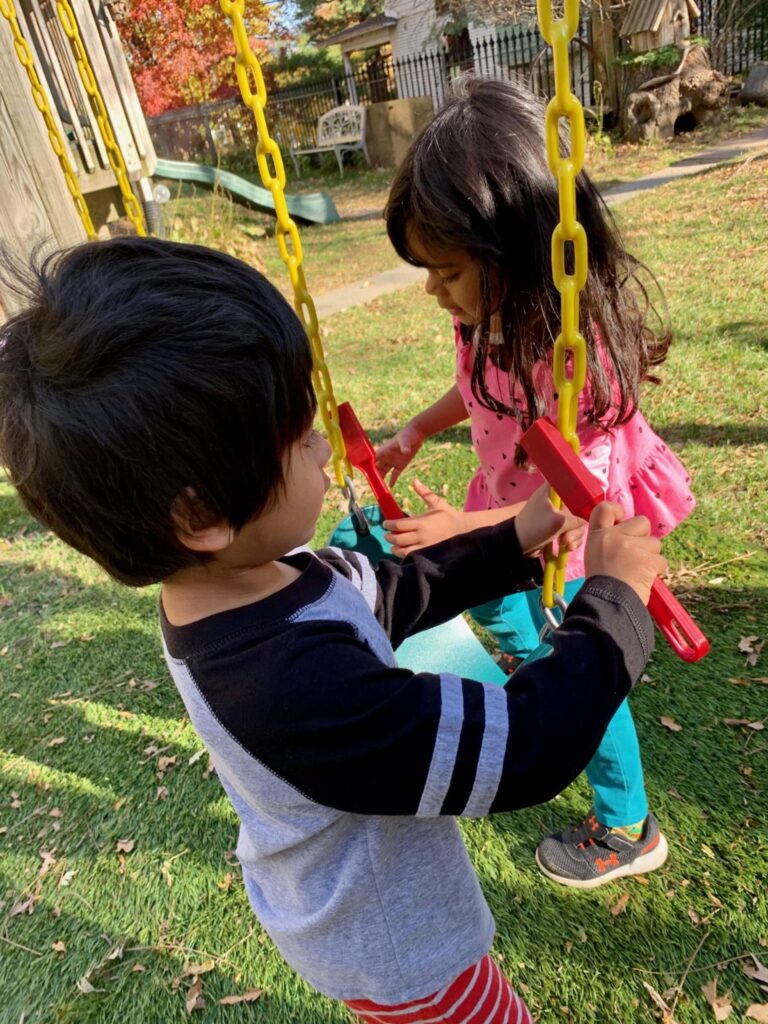Magnetic Explorers
"Hey guys, look over here!" Harrison summons us over to observe his experiment. "My magnet sticks to the bike!"

With a wave of their magnetic wands, the children have embarked on a STEM learning adventure! Opportunities like this allow children to learn independently as they explore and then share their discoveries with their fellow magnetic explorers.
This morning's investigation introduces the children to scientific methods such as forming ideas (hypotheses), setting up experiments to test their own ideas, analyzing data, and recording results.
We also have math exploration as the children learn about spatial awareness and math vocabulary as they begin to understand and label concepts such as location and positioning—all in a morning of play with friends.

"Oh, wait! It sticks on the red part, but not on the black seat," exclaims Harrison.
"Why won't it stick on the black seat, Harrison?" I ask.
"Because it's not metal," Harrison shares with the group.
"It's not metal!" the other children repeat in a chorus of little voices. We are in the modeling stage of language acquisition this month. A comment made by one child is repeated by every child, like a group of enthusiastic parrots. This behavior has been making me a bit crazy lately. But, at this moment, I am grateful.
"Wait! This part is black but my magnet sticks here." Harrison is thinking out loud as he puts the magnet on a black part of the bicycle. His comment is met with silence as the other children test out his observation and come to the same conclusion.
"Wow, Harrison, I am confused," I say. "Why does your magnet stick on the black part there but not on the black seat or the black tires?"
"This black line is metal," Harrison shares. "It is black metal."
The other children parrot his response as the learning continues: "Yes! It is metal—black metal!"
Harrison continues to educate his peers. "The red part of the bike is metal and this black strip here is metal. The tires and the seat are not metal."

Soon, the magnetic exploration moves to the swings, which leads to another deep dive into STEM learning as the children use their wands to determine which parts of the swingset are magnetic and which are non-magnetic.

We use red and green tape to document our results. Magnetic surfaces are marked with green tape (go) and non-magnetic surfaces are marked with red tape (stop). This is a fun and visual way to document our data.
There's a lot of learning in those magic wands! (Whoops, I meant to say "magnetic" wands, but sometimes magnetism really does seem like magic).
If you don't already have a set of these magnetic wands on hand, check out this six-wand set for toddlers and preschoolers.
Then round up your magnetic explorers and let the learning begin!